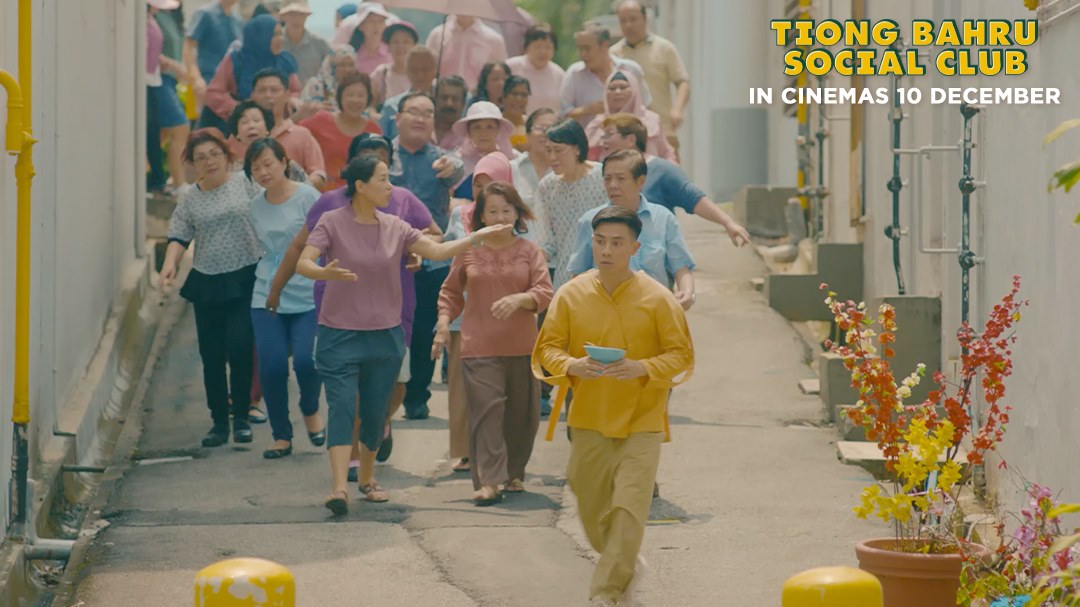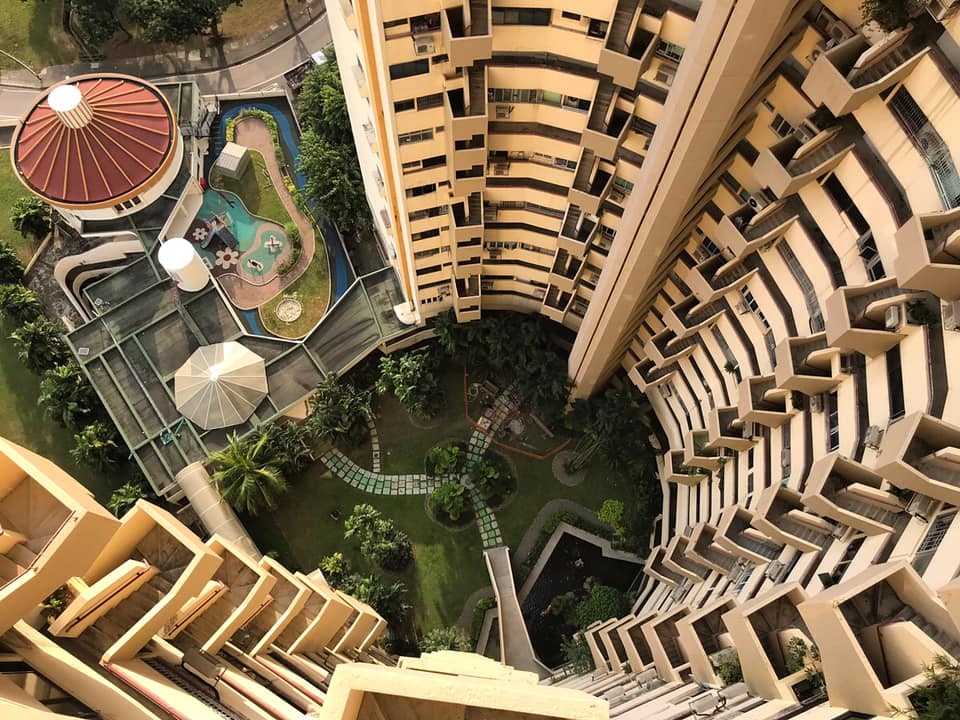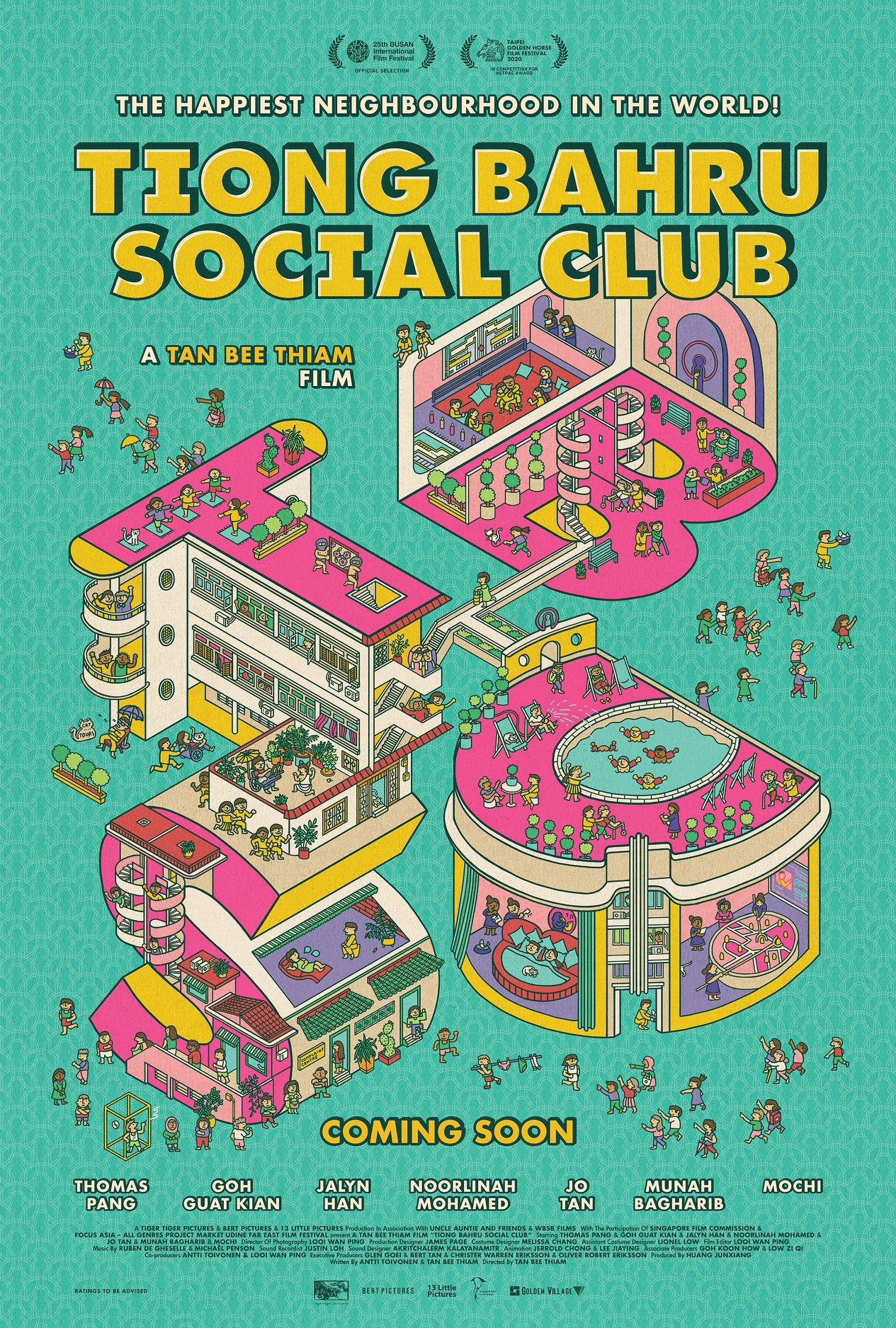by Susan Chang
語言:
English
Photo Credit: Tiong Bahru Social Club/Facebook
TIONG BAHRU SOCIAL CLUB, Tan Bee Thiam’s solo directorial debut, is a satirical comedy that follows a man (Ah Bee) who leaves his humdrum routine office job to become an “Agent” for a data-driven project aimed at creating the “happiest neighborhood in the world”.
The opening scene invites the audience to Ah Bee’s 30th birthday and his last day at work. Bee is being shouted at by his supervisor, pointing out that he should not approve every application. “Must follow the bell curve, you know”, she says.

Photo credit: Tiong Bahru Social Club/Facebook
Amusing and original, this line reminds many locals of the “Bell-Curve God”, emerged from the bell curve grading system in school, to which students “pray to” in hoping that they will be placed in a better spot along the curve. This perhaps foregrounds Bee’s anticipation that working as a happiness agent could be different. Bee is encouraged by his mother to take the new job, confident that he will be able to find meaning and happiness.
Upon his arrival, Bee is given a Happiness Ring, to “constantly” measure his happiness and positive impact on others. His dorm room is also equipped with BROVO60, an AI who “is Bee’s only friend”, but censors his emotion and finds ways for him to “hit the required KPI”. Every day at the residence, Bee and the other “happiness agents” are reminded by their supervisors that they have to increase “Gross community happiness”—the happiness level of their senior clients, other agents, as well as themselves. Everyday routines consist of artificial laughing and intimacy workshops. This indicates ironically how modern people have lost the ability to connect with oneself and others emotionally.
Bee starts to be troubled by a profound sense of emptiness, despite having a house, a girlfriend, and a job with prospects. As soon as he realizes that emptiness is where his full possibility lies, he decides to leave the Tiong Bahru Social Club and return home, a residential building of what seems like the Pearl Bank Apartments that is about to be sold for redevelopment.

Photo credit: Tiong Bahru Social Club/Facebook
The last scene ends with Bee and his mother laughing lightly at the commercial of “Pearl Social Club”, but the ambiguity of their emotions give the film a sense of being a gloomy tragedy where no one gets out of the system. However, perhaps like Peter Weir’s The Truman Show, the director wants to remind us that we are all in charge of our own happiness, regardless of how imaginative we are.
Tan Bee Thiam also plays well with color and nostalgia, among other important elements that make this film significant. The selection of colors speaks indiscernibly but directly to the human senses. Happiness Agents are given a yellow uniform. Yellow is the color of youth, energy, and optimism. However, too much of it, can cause self-esteem to plummet, giving rise to fear and anxiety. This is in contrast to the color of Bee’s friendly co-worker Orked’s clothing on the day she resigns—Blue, a color often described as peaceful, tranquil, and serene. The characters are also often placed under pink neon lights, tinting the film’s setting with a futuristic gleam.
While the director imagines an alternative future for Singapore, the two main scenes are set in Tiong Bahru and the Pearl Bank Apartments, the two of the earliest developments in Singapore. Tiong Bahru was developed in the 1920s as Singapore’s first public housing estate, while the Pearl Bank Apartments was once the tallest and densest private residential building in Singapore. The two estates will face different futures in terms of development and conservation, and putting these two sites together gives the film a retro future treatment, and at the same time allows the audience to think about the changes of urban landscape over the decades.

Photo credit: Tiong Bahru Social Club/Facebook
The film strikes home for many people reaching their 30s in this precarious world with no house, no car, no job, no relationship. This soft sci-fi illuminates social issues such as low marriage rate, the loss of human ability to connect with each other, an aging society, the growing digital world, and increasing reliance on algorithms and KPIs. Serving as both witty commentary and satire at the same time, the film points to how the lack of knowing how and what happiness means not only looms over Singaporeans, yet also finds resonance with other parts of the world.
Tan Bee Thiam has chosen an amusing take on the standard of living in Singapore. While the film does leave the audience questioning the concept of happiness, it also shows the (limited) power of human agency, where different characters all seem to find their way out under the scope of different sociological imaginations. The film also invites the audience to imagine a dystopian future (or perhaps reality) and to ponder over whether happiness can be measured—but can and should everything be measured if we choose to stay humane?



